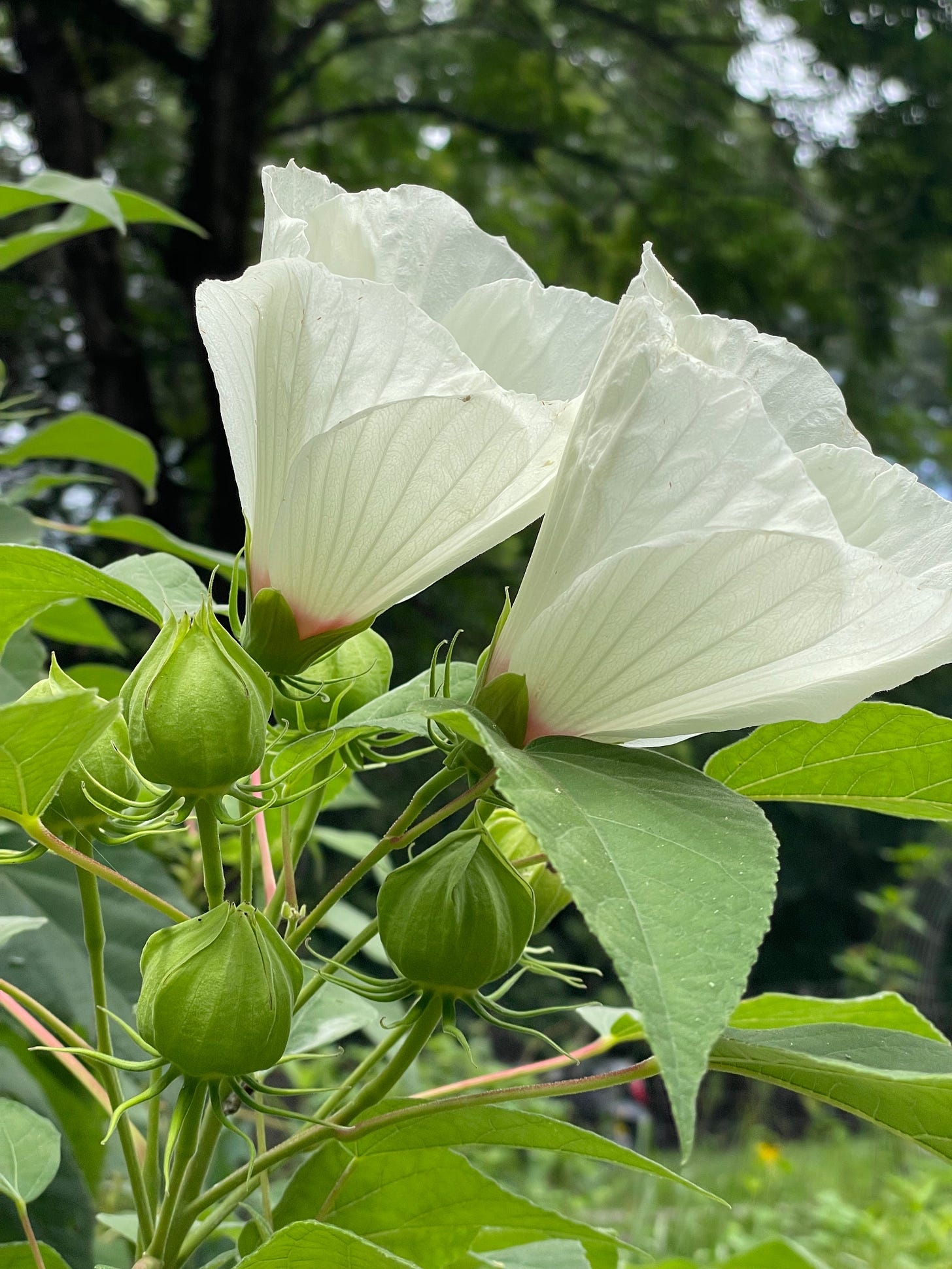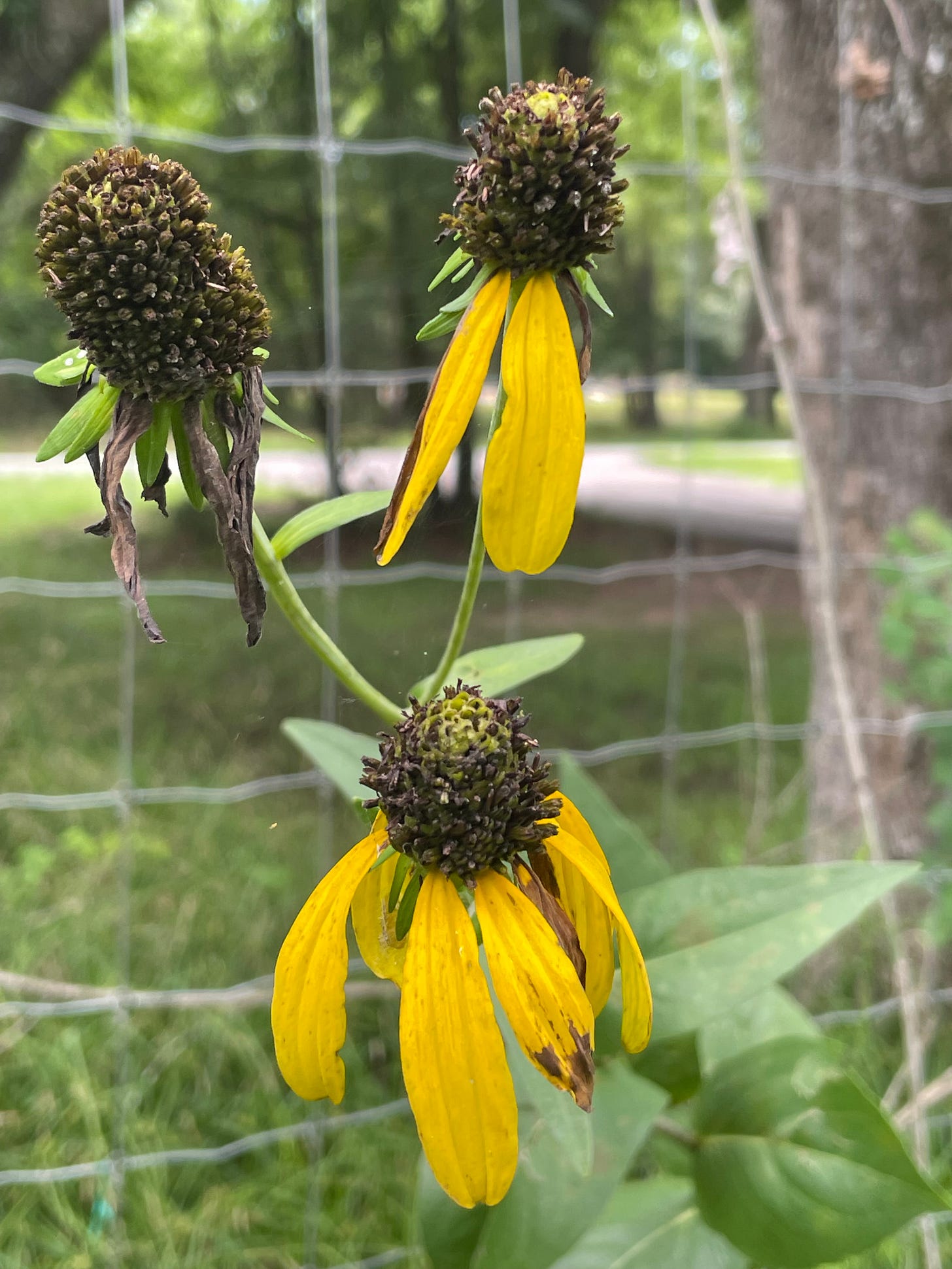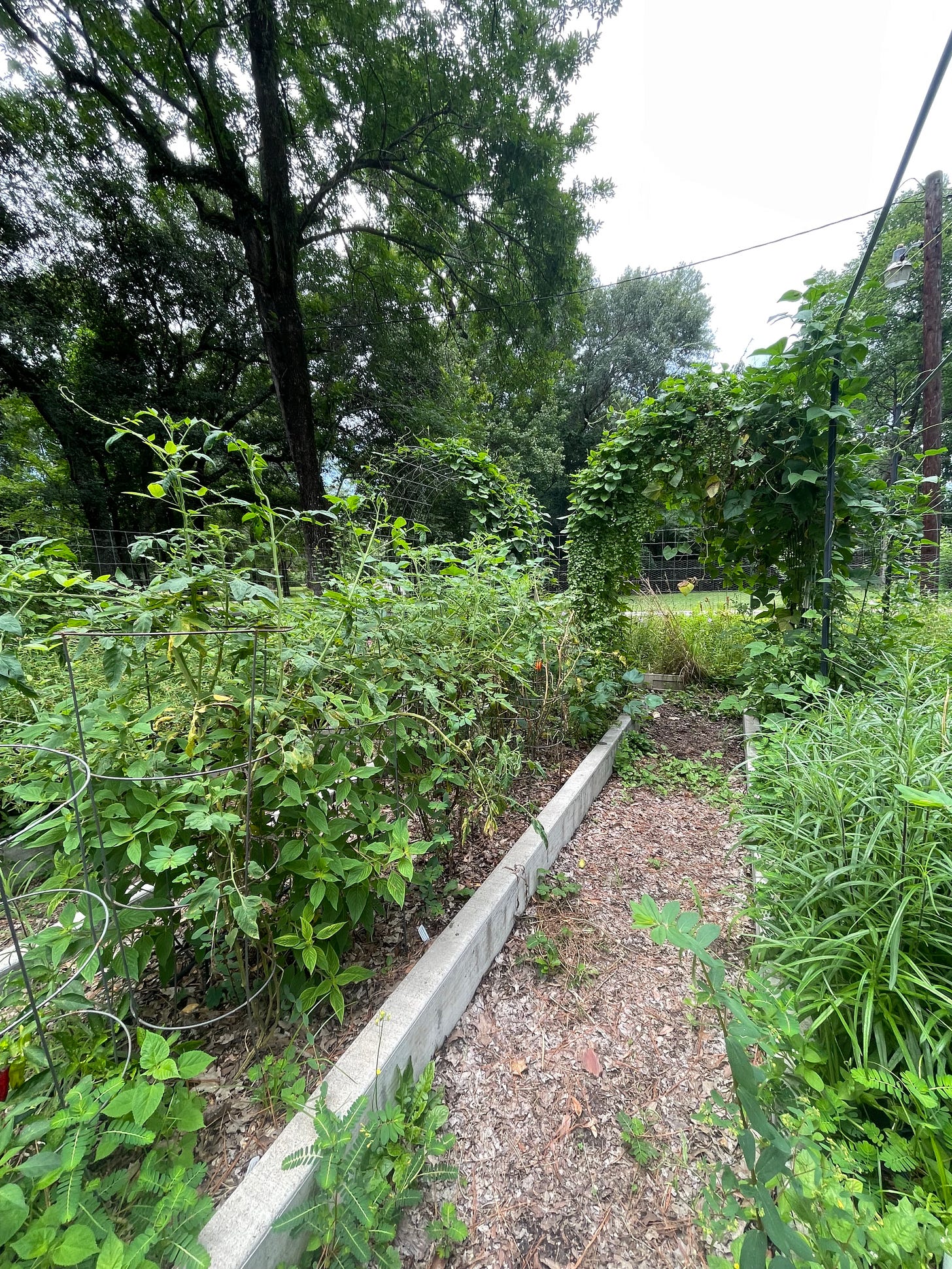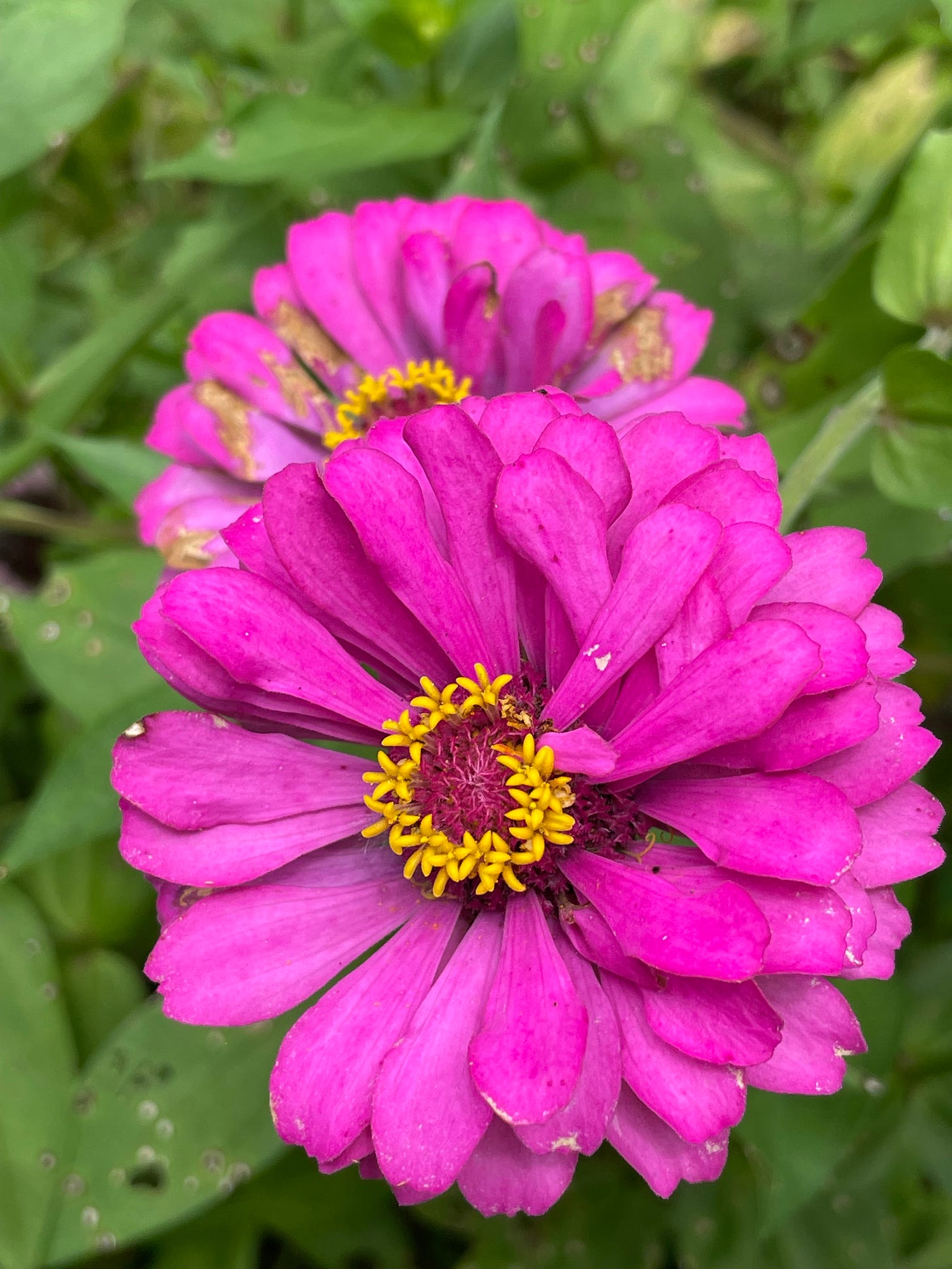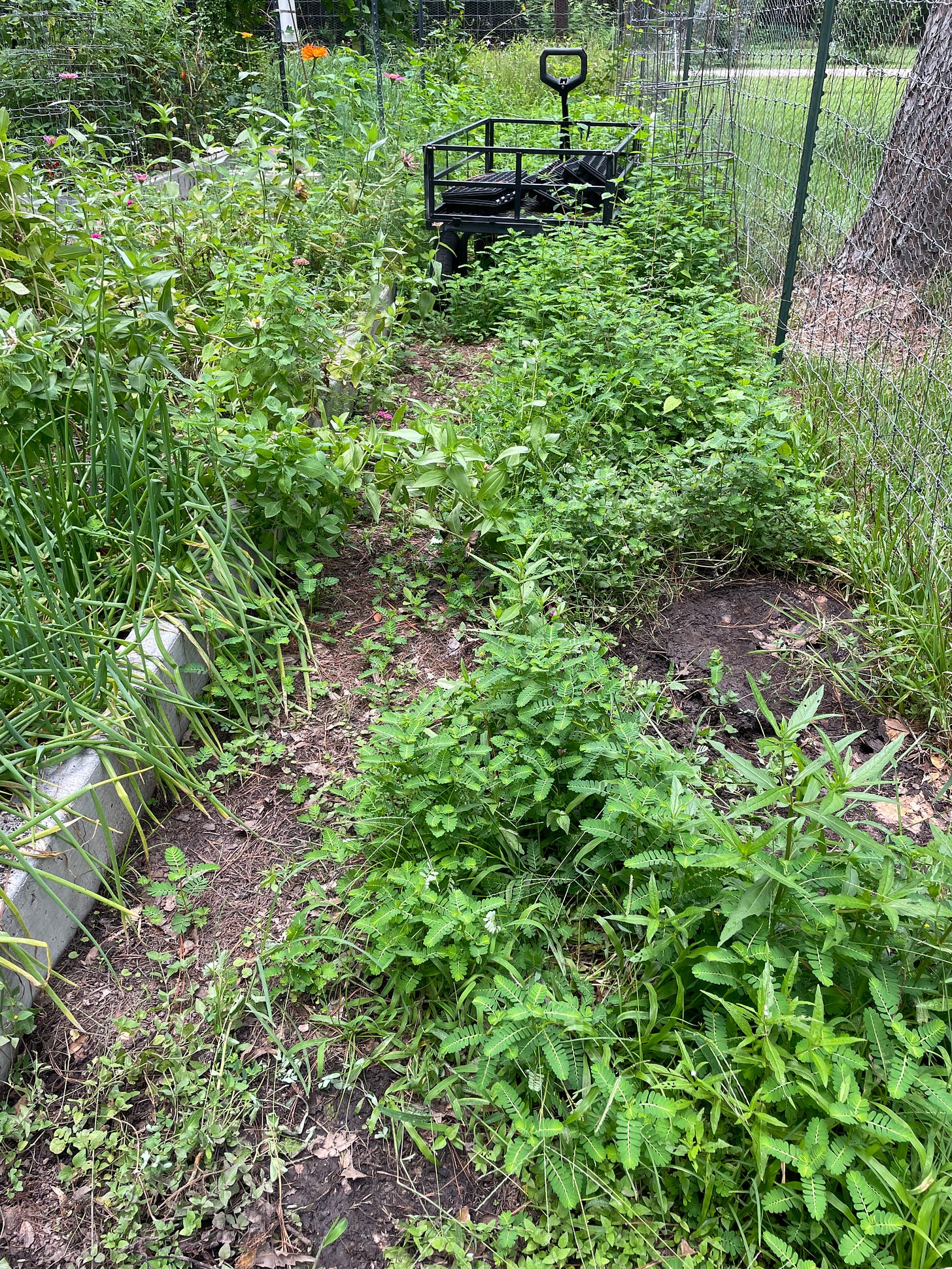Summer is full-on here in Texas, complete with high humidity and what seems to be almost daily showers or thunderstorms the last few weeks in the late afternoon or evenings. They’ve been very reminiscent of living in Florida where it is almost guaranteed that there will be an afternoon storm around 3 or 4pm every day. Needless to say, all of the rain has left a lot of lush growth in the garden and the weeds have taken off to the point of being unable to stay on top of any of it. I spent about five hours outside on Sunday, bouncing from task to task, pulling weeds, repotting some sapling trees, putting down leaf litter for mulch, and staking tall plants that have fallen over in the storms.
There’s still so much to do but I have to tell myself I’ll never catch up and that’s ok.
I planted common milkweed (Asclepias syriaca) many years ago now and I get several plants come up in one of the beds every year. I still have not had blooms on them yet, though the oleander aphids, seen here, and the milkweed beetles always seem to find them and enjoy chowing down despite the lack of flowers. I realized recently that I don’t recall seeing any monarchs in our gardens this year during spring migration. I’d like to hope they passed through while I was at work or away on weekends but usually I’m aware of at least a couple early on. Now I’m curious to see how fall migration fares.
Pausing in the garden while dripped in sweat and caked in dirt is a must, so I watched a few butterflies sip nectar from the zinnias on Sunday, too. This was a silver spotted skipper (Epargyreus clarus) and it would not sit still long enough for me to get better photos with my phone. I was trying to avoid going inside too much as filthy as I was so I didn’t run back to the house to get my camera for better photos. Say what you will about zinnias, they do bring a lot of butterflies to the yard!
Another one that showed up was this clouded skipper (Lerema accius). They were much more chill and let me approach a little closer, perhaps because the nectar was worth more than being afraid of the giant human nearby!
I’m going to have to rework this native plant bed after this season. I’ve let several taller plants spread more than I would have liked and they need to be rehomed or eliminated so that smaller species like the echinacea can thrive. Gardening means always editing.
Sometimes when I am feeling the need to iNat but have no hiking plans scheduled, just walking outside will get me what I needed: insects are everywhere! This red-banded leafhopper on a fresh zinnia was the boost I needed to scout the yard for more insects.
One plant that is thriving in the aquatic milkweed (Asclepias perennis). Several plants in our low swales in the front yard have turned into many plants and they are reliable bloomers. Still no monarchs, though.
The main culprit to the “taking up too much space” conundrum in the native bed in the edible garden is honestly one of my favorites, wooly rosemallow (Hibiscus lasiocarpos). The deer love hibiscus so we don’t really get to enjoy it beyond the fence, however I think it is time for some drastic thinning of these plants in the fall. But seriously. They are gorgeous!
I’m growing cotton again after a few years off. I planted them around the tomato plants, knowing the tomatoes will eventually die and then I could harvest the cotton. Sometime in the future, I would like to learn how to process it to spin it for small fiber projects. My memory is fuzzy so I can’t recall if I planted the brown cotton I have or/in addition to the Arkansas Green lint cotton. Either way, bolls are already forming and cotton is in the near future!
In the bog bed, the Sabine coneflowers (Rudbeckia scabrifolia) are beginning to wane.
The meadow beauties (Rhexia sp.) are still pumping out flowers, though, and really rocking it!
A view looking down the tomato aisle on the left. I’m thinking of ripping the tomatoes out this week in advance of some traveling this month. They haven’t produced well at all this year and honestly, I would rather plant some other stuff in their place and let the pineapple salvia (Salvia elegans) get to its massive glory by summer’s end.
And let’s close out with a swoon over more zinnias
Anyway, if you need me, I’ll be out attempting to deal with this.
Did you know I also write at ? Come on over and read a bit about what Texas has to offer with regard to its natural history!












